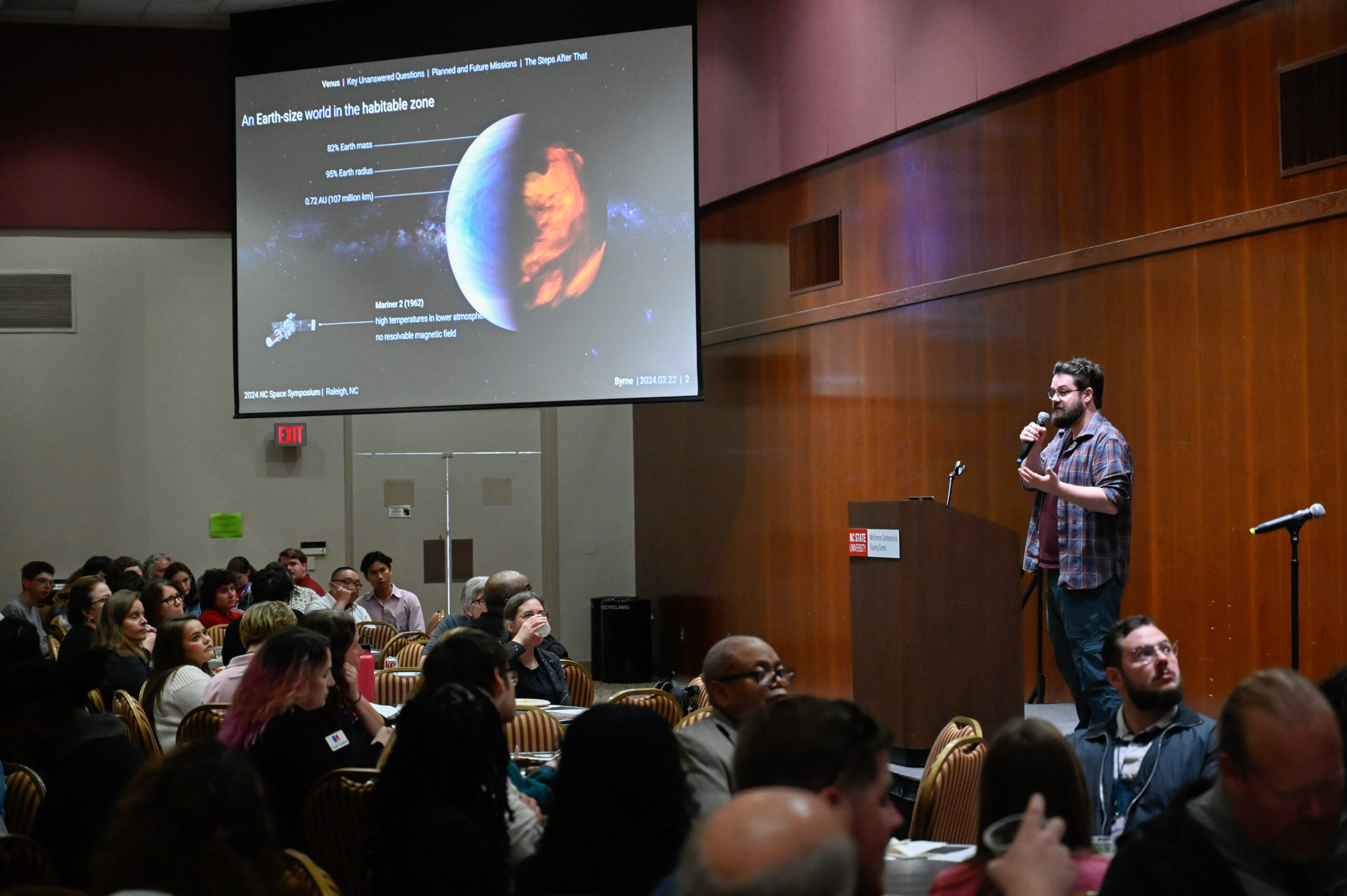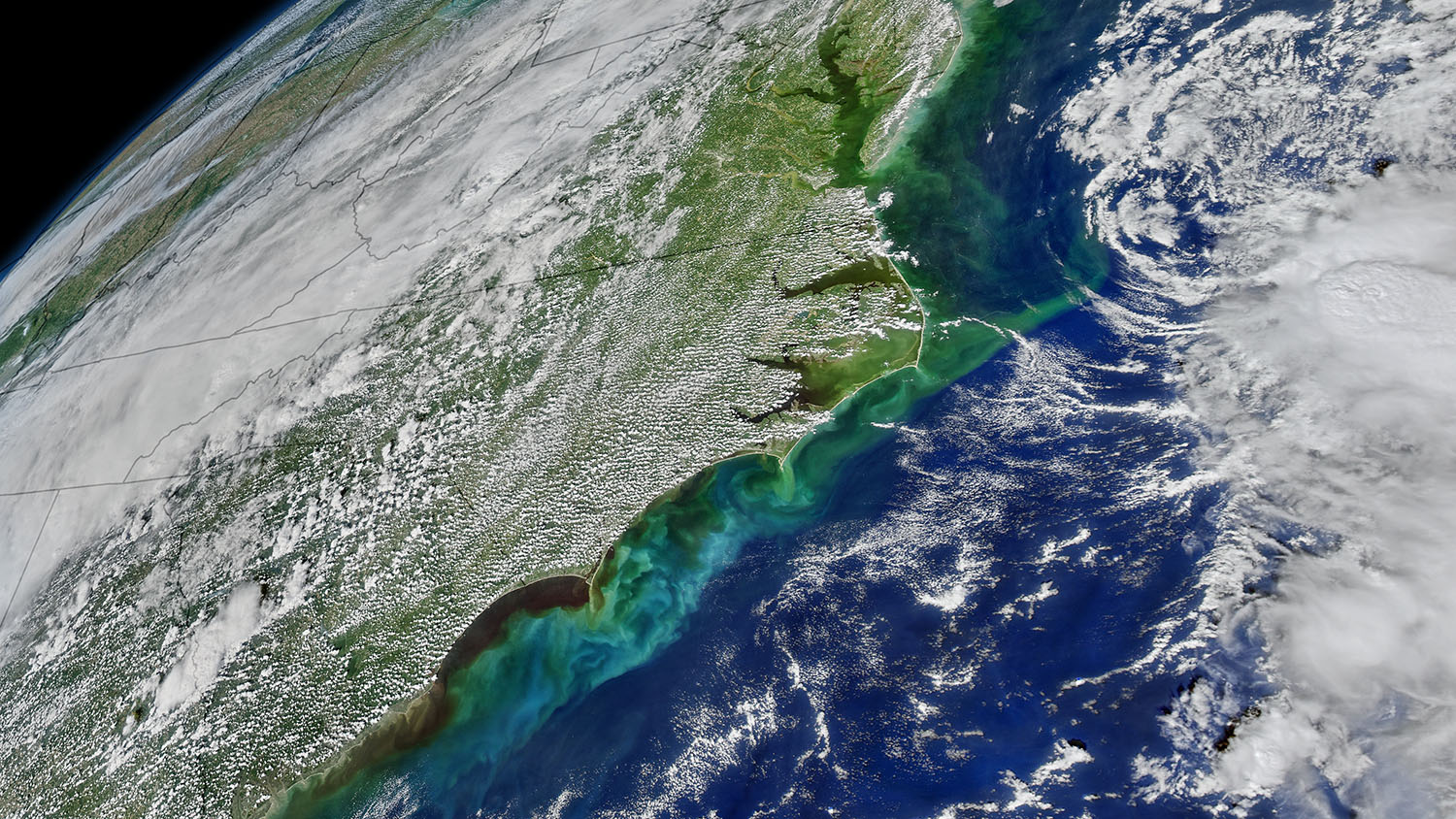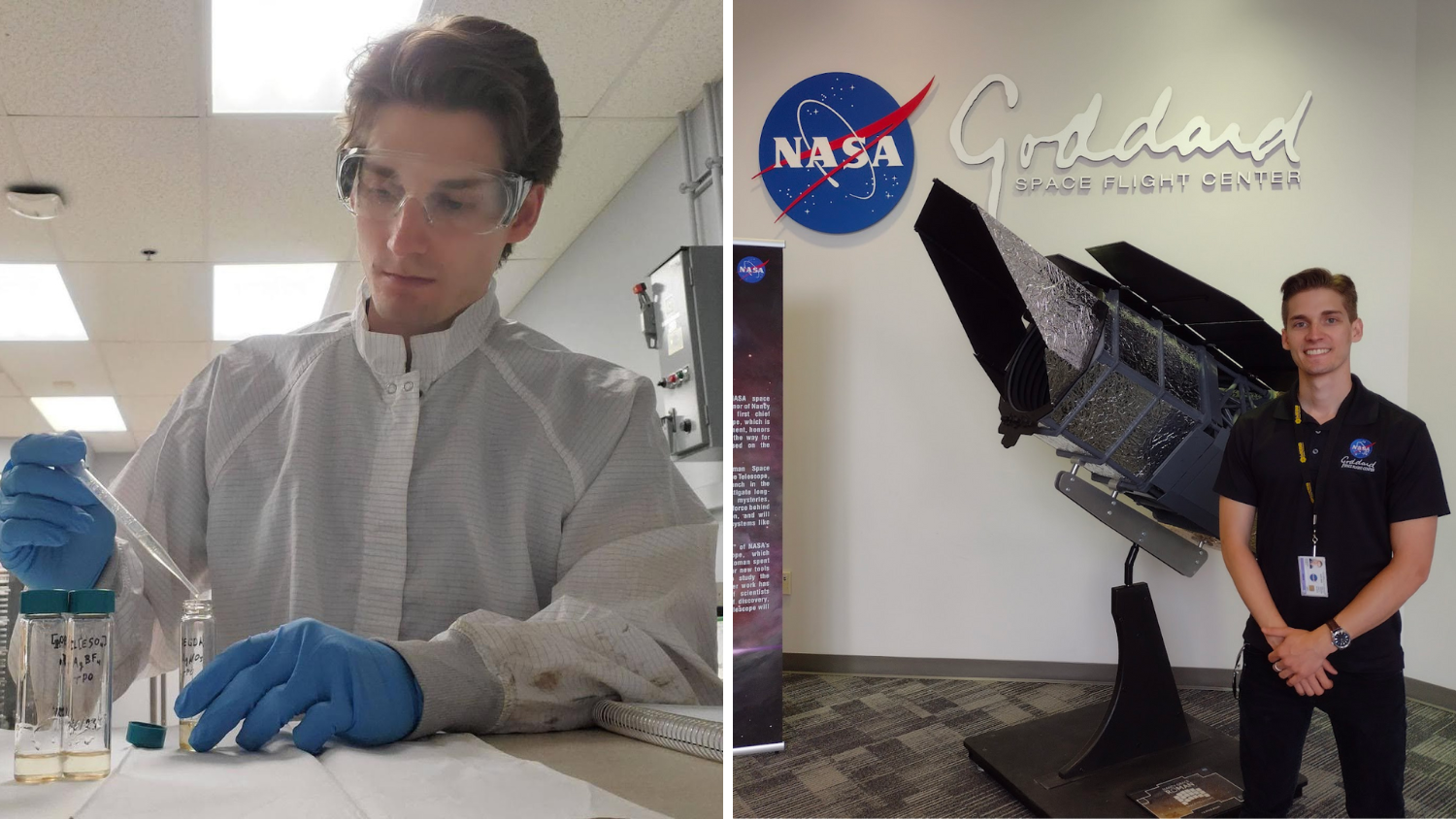NC Space Symposium Speakers Highlight NASA Missions, Earth Analog Research, and Open Science
Speakers include NASA professionals and researchers from diverse backgrounds. The event is on March 22, 2024, at the McKimmon Center on NC State University’s campus in Raleigh, NC.
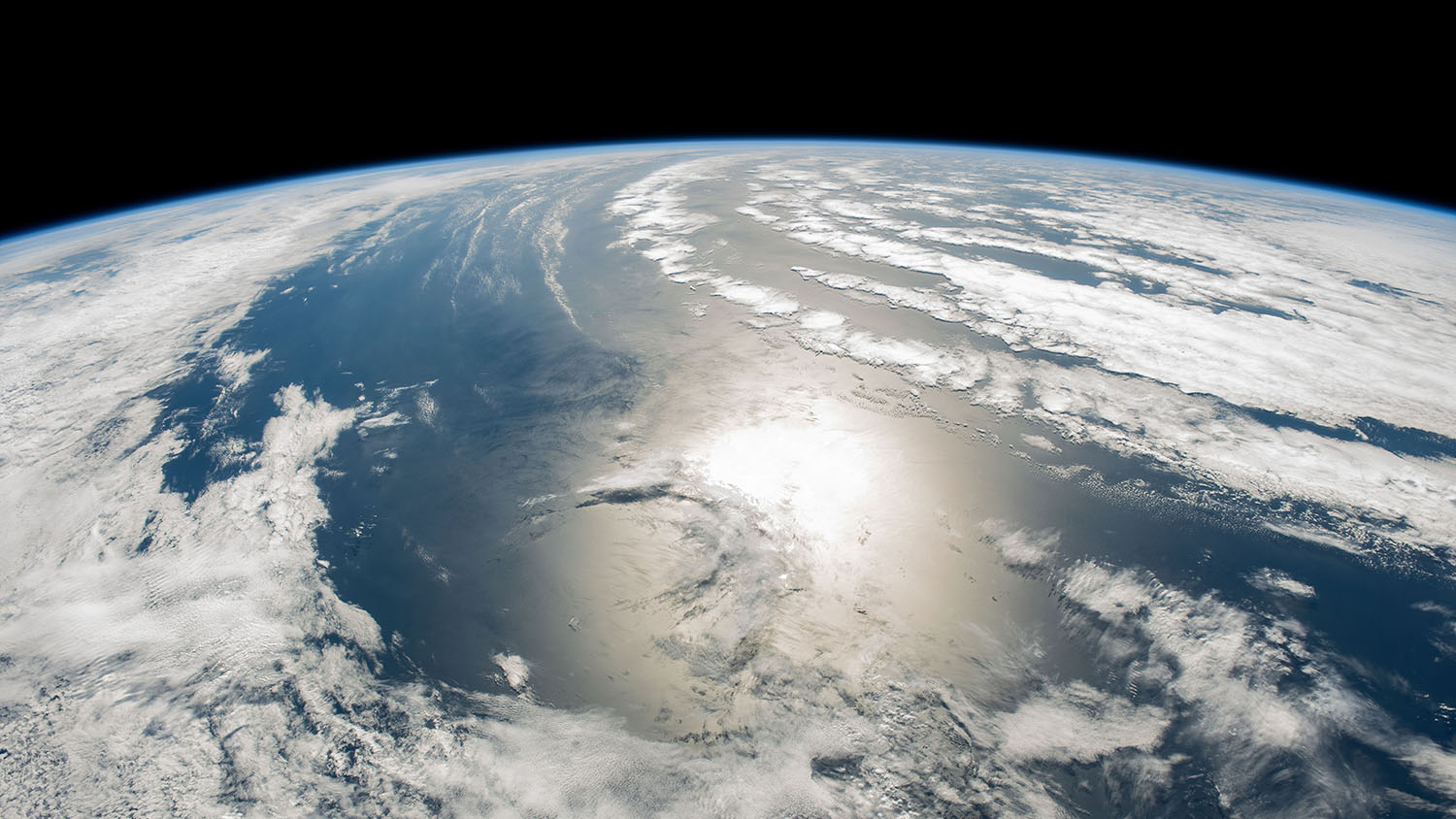
The 2024 North Carolina Space Symposium: Explore Earth and Beyond features diverse talks ranging from NASA Missions and career growth to planetary research, environmental justice, and community-engaged open science.
The first speaker of the day, Erica Alston, program executive in NASA’s Earth Sciences Division, will open the day with a talk titled, “From Back Roads to Space.” She will share about her journey from North Carolina to NASA and how students can get involved in NASA Earth Science missions.
The luncheon speaker, Paul Byrne, director of NASA’s Planetary Data Systems (PDS) Geosciences Node and associate professor of earth, environmental, and planetary sciences at Washington University in St. Louis, will speak about the use of remote sensing data, physical models, and their applications to explore other planets, specifically Venus, to better understand Earth.
The final speaker, Nathan Morrow, associate professor in international health and sustainable development at Tulane University, will lead a special session on open science and explore the concept through the lens of an environmental justice case study.
Meet the Speakers
Erica Alston
Program Executive, NASA Earth Sciences Division, NASA Headquarters
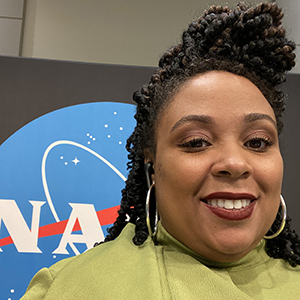
From North Carolina to NASA, Alston will share about this journey at the 2024 NC Space Symposium. Now, a program executive at NASA’s Earth Science Division, she helps manage NASA missions.
“Ultimately, my job is to get the next generation of Earth missions into space so that we (the public) can use this data to inform decisions big and small,” she said. “Also, I get to play a key role in getting missions into space. There’s nothing more exciting than watching a rocket go up knowing you played a part in that!”
Specifically, Alston helps manage the Total and Spectral Solar Irradiance Sensor-2 (TSIS-2) mission, which will measure the Sun’s energy input to Earth, and the Multi-Angle Imager for Aerosols (MAIA) mission, which will seek to understand how air pollution affects human health.
She joined NASA after her graduate studies as computer engineer in the Science Mission Directorate. However, that wasn’t always the plan – she first was interested in working at the National Oceanic and Atmospheric Administration with marine fisheries. But she found her niche at NASA after being recruited during graduate school.
“My niche sits at the intersection of earth science and end users, and I continue to serve that by enabling space-borne earth science missions,” she said. “I think being adaptable to different situations allows you options for where your career takes you.”
During the NC Space Symposium, Alston looks forward to sharing how students can get engaged with NASA and the agency’s missions and initiatives. From leveraging connections through the National Space Grant College and Fellowship Project to taking advantage of NASA internships, there are many opportunities, she said.
Paul Byrne
Director, NASA Planetary Data Systems (PDS) Geosciences Node
Associate Professor of Earth, Environmental, and Planetary Sciences, Washington University in St. Louis
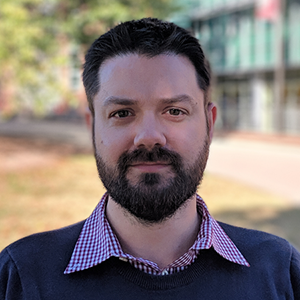
Attendees will delve into the cosmos as Byrne shares about his research exploring Venus to better understand Earth. Byrne examines the current and past conditions of the Earth-sized planet, including its past habitability and whether it ever hosted oceans.
However, Venus is anything but Earth-like, Byrne says. According to NASA, Venus is intensely hot and highly pressurized. It also has clouds of corrosive acid. Even so, it may have been habitable before Earth.
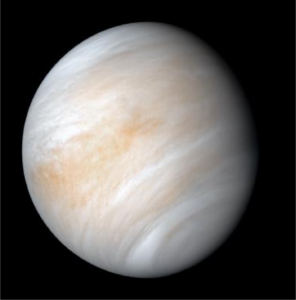
“By understanding why the conditions on Venus are different from those on Earth, scientists can get a better understanding of why Earth has remained habitable for more than three billion years,” he said.
It also can reveal how Venus came to be the way it is today, and how that can be avoided for planet Earth.
“Arguably the biggest challenge we face as a species right now is anthropogenic climate change,” Byrne said. “Venus is the type example of a world where a runaway greenhouse condition dominates. Establishing why, when, and how Venus turned into the hellish world it is today will be crucial for our stewardship of our own planet.”
The exploration of other planets is exciting, ambitious, and difficult, but also rewarding, he says. Exploring the unknown catches the eyes of many students, and NASA has resources for students at all levels to get involved and learn more, he adds. Byrne’s talk at the Symposium will further explore these compelling topics.
Nathan Morrow
Associate Professor in International Health and Sustainable Development, Tulane University
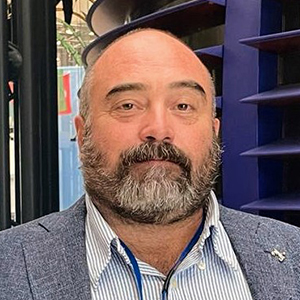
Morrow is an applied science researcher conducting disaster, coastal resilience, food security, and environmental justice research. To support research, policy and development in these areas, he often collaborates with community-based organizations and leverages geospatial tools and open science.
According to the U.S. government, “open science is the principle and practice of making research products and processes available to all, while respecting diverse cultures, maintaining security and privacy, and fostering collaborations, reproducibility, and equity.”
In short, open science is sharing research and resources to increase transparency, boost research impact, accelerate discoveries, and more accurately produce findings all while collaborating with communities and promoting an inclusive and diverse environment.
For community-based and applied science research, Morrow says that open science is extremely important.
“If you are interested in any sort of justice, humanitarian or development causes, or want to work in communities, these are all applied research issues, and open science is the way,” he says. “It’s more inclusive. It’s more collaborative, and it honors all of the different parts that go into science from the communities.”
“Open science is really important for those students who want to make a difference with their science,” he adds.
Morrow’s special session will dive into the basics of open science and how to best adapt the concept for community-based research. Specifically, his session focuses on an environmental justice case study in Gulf Coast communities, which examines the potential of NASA Earth Science and observation products to address environmental and climate change-related disparities.
This session will lead into the NASA-led Open Science 101 workshop. In this interactive workshop, students will learn about the current landscape of open science, the benefits, and challenges.
Students attending the workshop will start NASA’s Open Science 101 curriculum as the workshop will address the first of five module’s content, Ethos of Open Science. After completing the workshop, participants are encouraged to complete an additional four modules designed to equip researchers, students and citizen scientists with the knowledge and skills to navigate the principles and practices of open science, including developing an open science and data management plan. Once complete, learners will receive NASA’s Transform to Open Science (TOPS) badge.

About the Symposium
NC Space Grant’s signature event brings together and features experts, researchers, and students with the goal of sharing the latest NASA-relevant research. It also celebrates student research and provides an avenue for valuable networking. Oral and poster presentations, lightning talks, and a workshop will showcase a variety of NASA-relevant topics.
In an effort to prepare students with cutting-edge research skills, NC Space Grant is offering a NASA-led Open Science 101 workshop, which will feature NASA’s new Transform to Open Science (TOPS) Open Science 101 curriculum.
Register to attend the 2024 NC Space Symposium by March 15, 2024.
Update March 13: The workshop is now full, but students can still begin their open science journey with NASA TOPS Open Science 101 curriculum. General registration is still open until March 15.
☽
- Categories:
